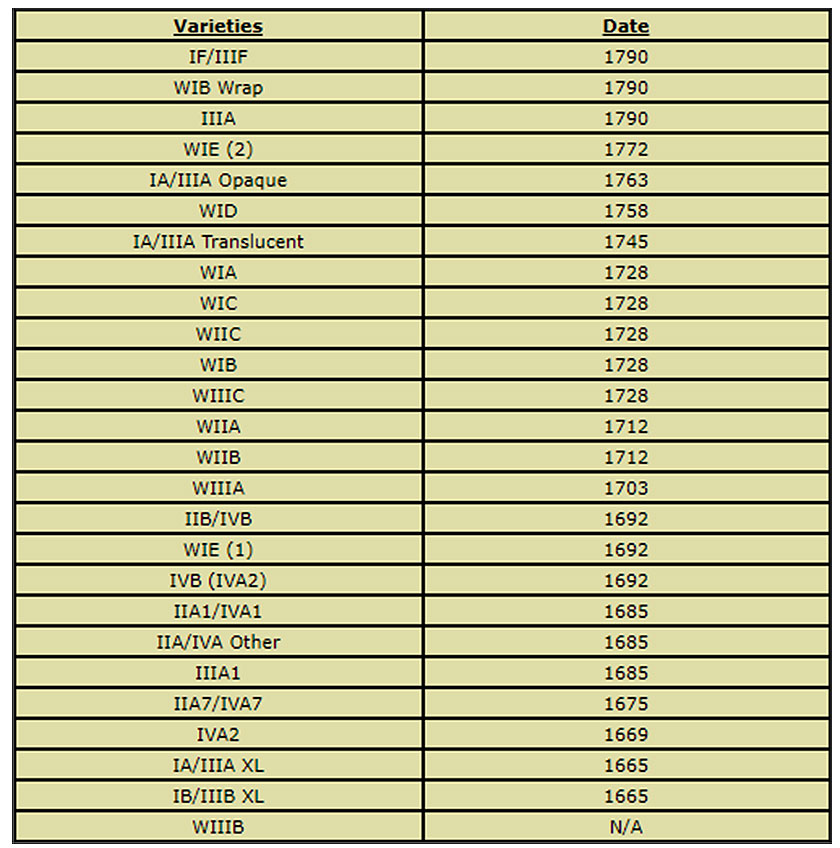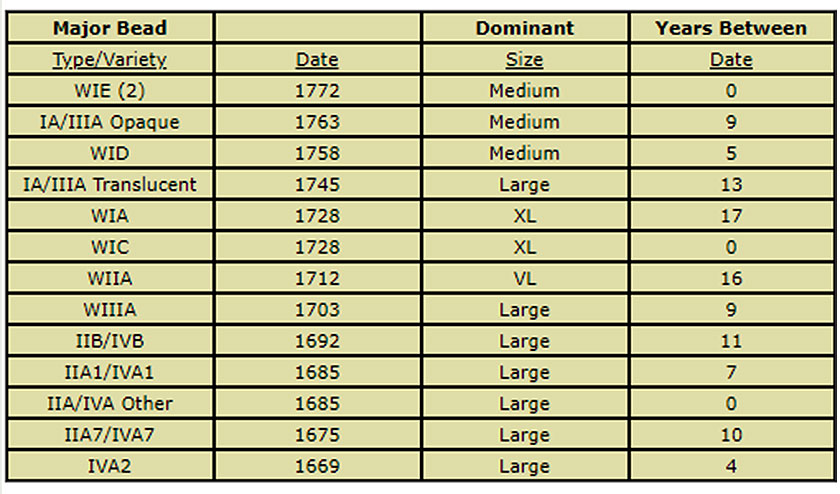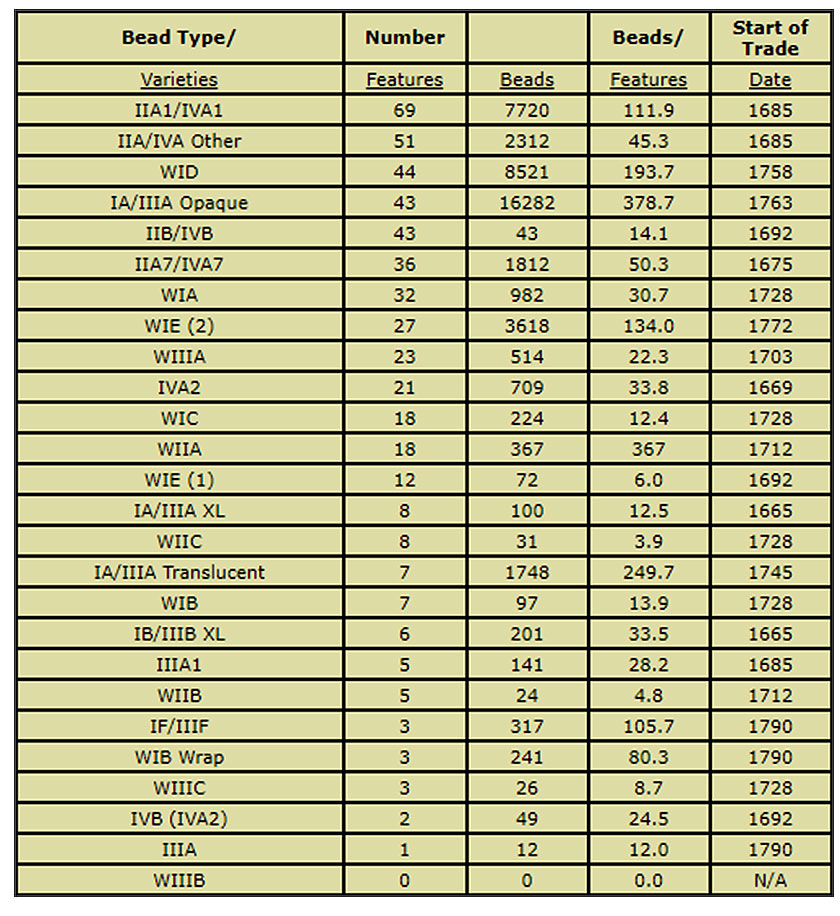
Bead Dating Conclusions
WIIIB, while present in the collections, did not occur with any acceptable features. Had a number of WIIIB features been represented, the author believes that WIIIB would date chronologically after IA/IIIA Translucent, which would make the beads immediately prior to WIIIB date earlier, particularly IA/IIIA Translucent. In addition, IA/IIIA Translucent occurs predominantly in navy blue. The IA/IIIA Translucent found with WIA tended to be clear or colors other than navy blue. Perhaps the navy blue IA/IIIA Translucent is older than the clear IA/IIIA Translucent. Future workers may wish to attribute this type by color.
Table 10 indicates a sort of major and minor beads by dates. Note that the drawn beads date early and late in the sequence with the mandrels filling in the middle. The bead date represented is the start of trade for that bead type/variety.
Table 10 Major/Minor Beads by Date
Some of the neighboring bead types/varieties on Table 10 share other attributes than date. For instance, IIA1/IVA1 and IIA/IVA Other are separated by color only and serve as the matrix for the later dated IIB/IVB. Many of the wire-wound beads bead types/varieties express the same colors of glass. For instance, the common dated WIIA and WIIB use the same colors: primarily blue, clear and amber. WIA, WIC, and WIIC commonly occur as the milky blue glass. WIB shares color characteristics of both mandrel groups-WIIA and WIA. With this insight, sequence groupings could have been assumed.
Table 11 addresses dominant bead size over time. Recall that the very small and small beads were not included in this paper. Still, size does demonstrate change in bead size. By the 1760s and 1770s the bead sizes were dominated by medium sizes.
Table 11 Major Bead Size
Table 12 provides a sort that ranks the features. Note that four of the six highest ranked (number of) features date prior to 1692. That the Chickasaw population (Swanton ISUS 118) was much larger in the late seventeenth century than two generations later may explain the high number of early features. The two later dated bead type/varieties, WID and IA/IIIA Opaque that had a high number of features may be explained by the devastating 1784 measles outbreak addressed by Malcolm McGee (Draper 6).
It is interesting to note that neither the very earliest dated beads nor the latest occurred in a significant number of features, as would be expected. The earlier dated beads existed pre sustained trade while the latter dated bead features were minimized due to villages' abandonment.
Table 12 demonstrates a definitive break in the bead dating and the number of features from 1728 (WIA and WIC) until 1758 (WID). During this period, the Chickasaw that remained in their villages were confined to Old Town (Cook Paper1 Figure 10). Trade was not reaching the Chickasaw consistently due to French sponsored Indian raids; this was noted by the Carolina traders living with the Nation.


